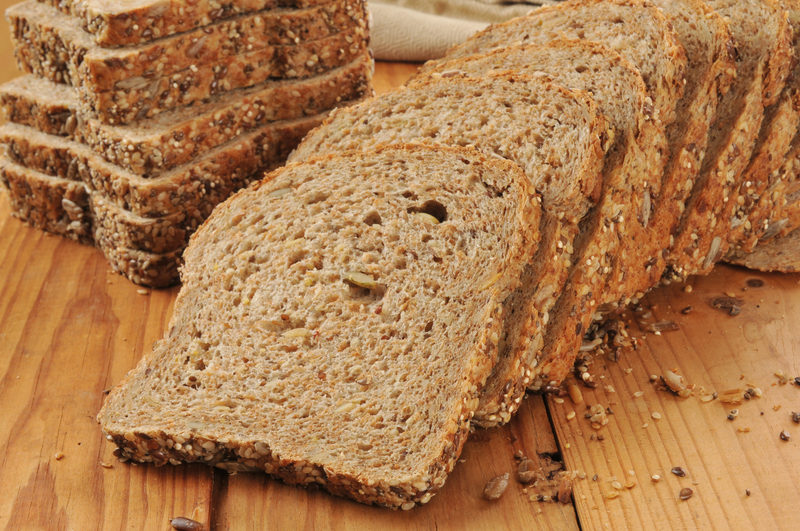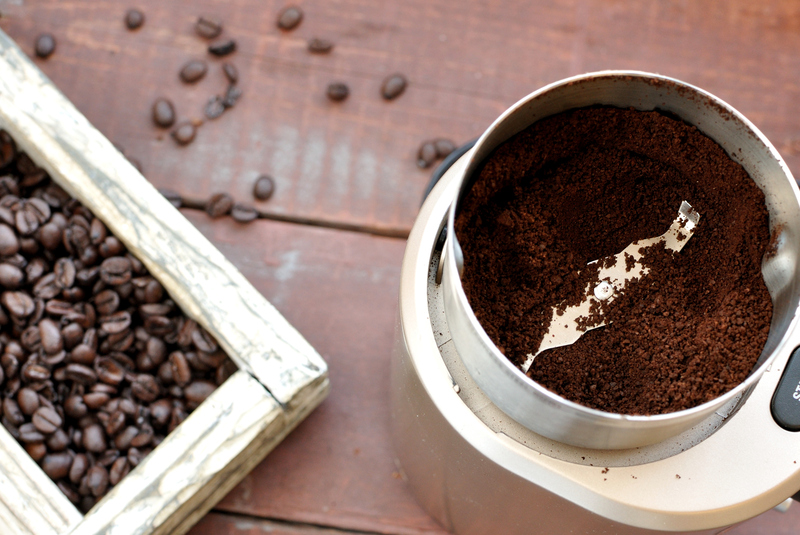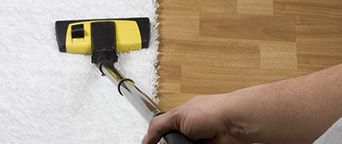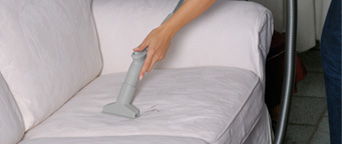Mastering the Art of Cleaning Mouldy Window Sills
Posted on 20/09/2025
Mastering the Art of Cleaning Mouldy Window Sills: The Ultimate Guide
Mouldy window sills are more than just an unsightly nuisance--left untreated, they can compromise your home's air quality and even damage property. In this comprehensive guide, we'll delve deep into mastering the art of cleaning mouldy window sills. You'll discover why mould forms, how to remove and prevent it, and essential tips for keeping your window sills spotless and healthy.
Understanding Why Mould Appears on Window Sills
Before tackling the cleaning of mouldy window sills, it's crucial to understand why mould tends to accumulate in these spots. Windows, after all, form a vital barrier between your home and the elements, but they're also vulnerable to moisture, temperature fluctuations, and condensation.
- Condensation: Temperature differences inside and outside your home can lead to condensation, especially on window panes and sills, promoting mould growth.
- Poor Ventilation: Rooms with little air circulation trap humidity, leading to damp corners--perfect for mould to thrive.
- Leaks and Water Ingress: Faulty window seals, cracks, or ill-fitted windows can allow rainwater or moisture to seep in.
Ignoring early signs of mould on your window sills can turn a small problem into a health hazard. Children, elderly people, and those with respiratory illnesses are particularly susceptible to the ill effects of mould spores.

Essential Preparation for Cleaning Mouldy Window Sills
Tackling window mould begins with preparation. Arm yourself with the right protective gear and cleaning supplies to ensure you remove the mould safely and effectively.
Gather Your Cleaning Materials
- Rubber Gloves - to protect your hands from mould and cleaning agents
- Protective Mask - to avoid inhaling mould spores
- Safety Goggles - to protect your eyes
- Spray Bottle - for applying cleaning solutions
- Scrubbing Brushes or Toothbrushes - ideal for getting into crevices
- Soft Cloths or Sponges - for wiping and drying surfaces
- Detergent, Vinegar, or Bleach - see our recommendations below
- Bucket of Warm Water - for rinsing
Ensure Good Ventilation
Always open windows or use an exhaust fan when cleaning to help prevent the spread of mould spores and to keep the area well-aerated. If windows do not open, consider using a portable fan to direct spores out of the room.
Step-by-Step Guide: How to Clean and Remove Mould from Window Sills
The most effective way to clean mouldy window sills depends on the type of window sill material and the extent of the mould. Here's a comprehensive approach that's suitable for wooden, PVC, and aluminum sills.
Step 1: Assess the Damage
Inspect your window sill. If the mould is black, green, or fuzzy and covers a large area, or if the wood feels soft and rotten, professional help might be needed. For minor or moderate mould, DIY cleaning is usually effective.
Step 2: Vacuum or Dry Brush Mould Spores
- Wear your protective gear.
- Use a vacuum with a HEPA filter to gently remove loose mould spores, or lightly brush the surface outdoors to avoid spreading spores inside.
Step 3: Choose Your Cleaning Solution
- White Vinegar: Natural, non-toxic, and effective on most types of household mould. Pour vinegar into a spray bottle undiluted.
- Household Bleach: Use for stubborn or extensive black mould. Mix 1 part bleach to 10 parts water.
- Commercial Mould Removers: These are designed to penetrate and kill mould at the source.
- Soap and Water: Mild detergent and warm water can remove surface mould on PVC or painted sills.
Tip: Never mix bleach and vinegar--combining them can produce dangerous fumes.
Step 4: Apply the Cleaning Solution
- Spray the affected area generously and let it sit for at least 10 minutes.
- This soaking period helps break down the mould structure for easier removal.
Step 5: Scrub Away the Mould
- Use a scrubbing brush or toothbrush to gently work the solution into the sill.
- For persistent stains, apply more cleaning solution and scrub in circular motions.
- Be careful not to damage the paint or surface finish if you're cleaning wooden window sills.
Step 6: Rinse and Wipe Dry
- Use a clean, damp cloth to wipe away the mould and cleaning solution.
- Rinse with fresh water to remove any remaining detergent or chemicals.
- Dry thoroughly with a towel--moisture is mould's best friend!
Step 7: Dispose of Cleaning Materials Safely
- Dispose of cloths or paper towels used in plastic bags to avoid spreading spores.
- Clean your brushes and vacuum filter thoroughly.
Special Care for Different Window Sill Materials
How to Clean Mould on Wooden Window Sills
Wooden sills are particularly prone to mould growth due to their porous nature. Use minimal liquid to avoid soaking the wood, and try vinegar or mild detergent first. For persistent mould, a diluted bleach solution, followed by sanding and refinishing, may be necessary if the wood is not painted.
Cleaning UPVC or PVC Window Sills
UPVC (unplasticized polyvinyl chloride) sills are robust and water-resistant, making them easier to clean. You can use stronger cleaning agents here, but always test a small area first to avoid discoloration.
Aluminum and Metal Window Sills
These are less likely to be affected by mould, but when it appears, use a mild detergent and scrub lightly to avoid scratching the surface. Dry thoroughly to prevent rust.
Effective Mould Prevention Strategies for Window Sills
Mastering the art of cleaning mouldy window sills isn't just about removal--it's about prevention. Here are strategies that will help keep your window sills pristine all year round:
- Improve Ventilation: Use trickle vents, open windows regularly, or install extractor fans--especially in kitchens and bathrooms.
- Control Indoor Humidity: Keep humidity levels below 60% with dehumidifiers or air conditioning.
- Insulate Windows: Double or triple glazing, or the use of insulating films, can reduce condensation and water accumulation.
- Regular Cleaning: Wipe down window sills weekly with a mild detergent to remove potential mould nutrients like dust and dirt.
- Check for Leaks: Inspect seals and caulking, repair any cracks, and ensure the outside drainage slopes away from windows.
- Use Mould-Resistant Paint: Particularly on wooden sills--these paints create a barrier that inhibits future growth.
Natural Alternatives for Cleaning Mouldy Window Sills
If you prefer to avoid harsh chemicals, there are several natural, eco-friendly alternatives that are gentle on your home's materials and the environment.
- Baking Soda: Mix 1 tablespoon with water to form a paste, apply to the mould, scrub, and wipe clean.
- Tea Tree Oil: Add a teaspoon of tea tree oil to a cup of water in a spray bottle, spray on the sill, allow it to sit, then wipe off--tea tree oil is a natural antifungal.
- Hydrogen Peroxide: Use 3% hydrogen peroxide in a spray bottle as a non-toxic mould fighter.
Remember: Even natural cleaners must be used with care. Always ventilate the area and wear gloves.
When Should You Seek Professional Help?
Occasionally, the problem may be too large to tackle by yourself. If the mould:
- Has spread to the walls, ceiling, or beyond the window sills
- Is causing a persistent musty odour throughout your home
- Reoccurs shortly after cleaning
- Is linked to structural water ingress or roof leaks
It's time to call in a professional mould remediation service. They have specialized equipment, industrial-strength cleaning solutions, and the expertise to restore your home's safety.

Frequently Asked Questions About Cleaning Mouldy Window Sills
How often should I clean my window sills to prevent mould?
Weekly cleaning and inspection is ideal, especially during damp weather. Immediately dry any condensation that forms.
Can vinegar remove all types of mould from window sills?
White vinegar is effective against most household mould species but may struggle with severe black mould (Stachybotrys). For tough cases, combine physical scrubbing with vinegar or use a stronger agent.
Is bleach safe for use on wooden window sills?
Use bleach sparingly and always dilute it. For bare or unpainted wood, excessive moisture can damage the material, so try vinegar or baking soda first.
Why does mould keep returning on my window sills?
Ongoing moisture issues--such as leaky windows, poor insulation, or lack of ventilation--are the culprits. Address the source of the dampness to successfully break the cycle.
Conclusion: Become a Master of Mould-Free Window Sills
Mastering the art of cleaning mouldy window sills is not just about winning the battle against unsightly patches. It's about maintaining a healthy indoor environment for you and your family and preserving the integrity of your home's finishes.
- Identify and address the source of excess moisture promptly.
- Use the right cleaning solutions and techniques for your window sill material.
- Adopt regular cleaning practices and preventative strategies to keep mould at bay.
- Don't hesitate to get professional assistance for extensive or stubborn infestations.
By following this comprehensive, SEO-optimized guide to cleaning mouldy window sills, you can restore freshness, improve your home's atmosphere, and even enhance its value. Roll up your sleeves and say goodbye to that unwanted mould--your window sills will thank you!







